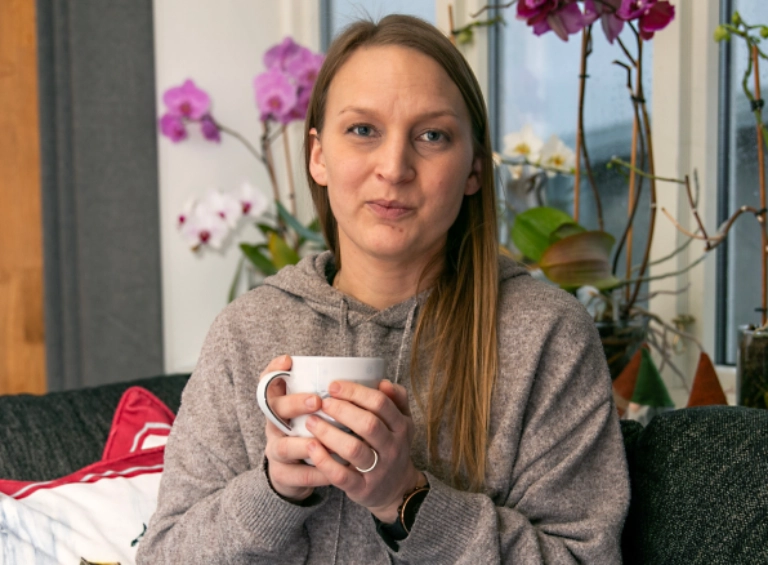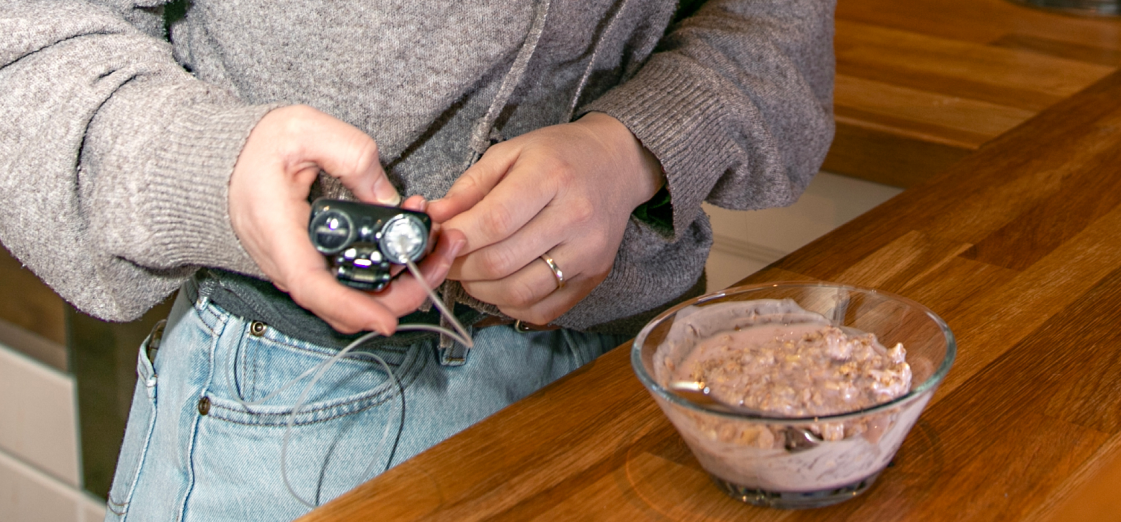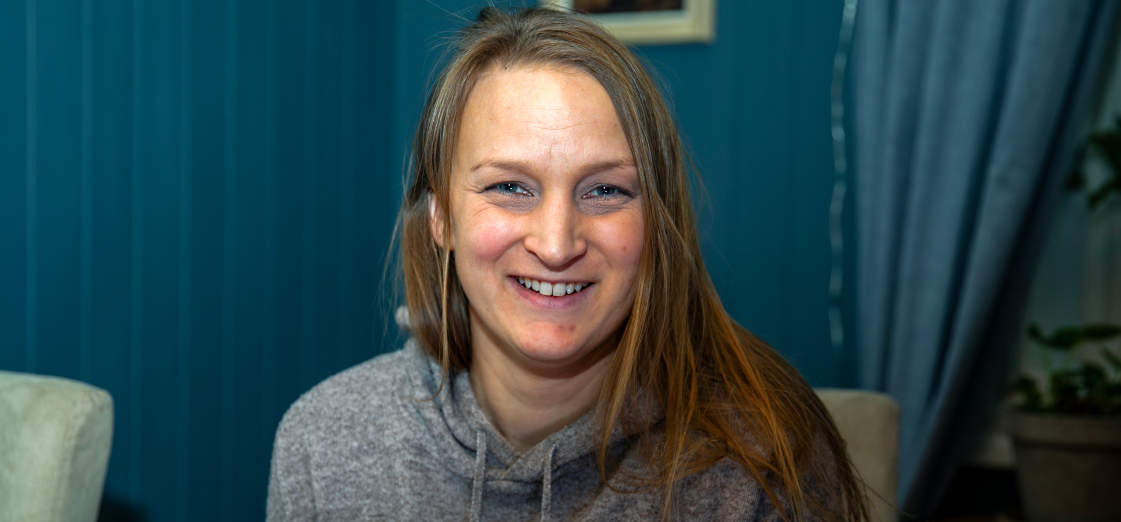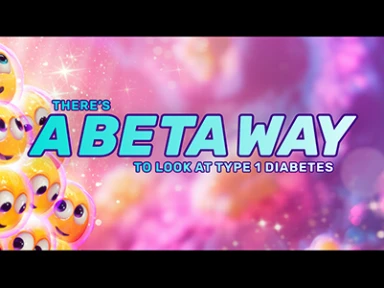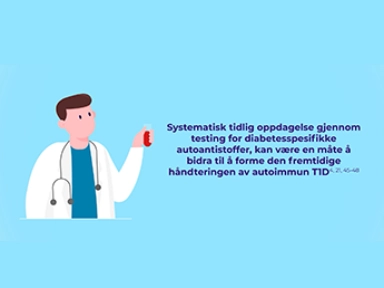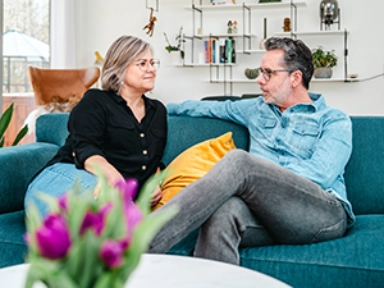With Grandma as Inspiration: Refusing to Let the Diagnosis Limit Her
Silje Elfrida (36) lives in Tjodalyng, near Larvik, works in the healthcare sector, and leads a busy life with two very active sons aged seven and five. At the same time, she is navigating an uncertain romantic situation. Diagnosed with type 1 diabetes at the age of 19 in 2007, Silje Elfrida took on the challenge immediately, determined not to let the condition limit her life.
Grandmother with Diabetes
Silje grew up surrounded by close family. Her grandmother lived in the neighboring house and was diagnosed with type 1 diabetes at the age of 34.
"As a child, I had one task: to call Mimmi every morning. If she didn't answer, I was to run over and check that everything was okay. If we were going on a trip together, we always carried sugar cubes and a glucose injection."
"For me, it was normal to see these injections being given—some of them I even administered myself as a child. Now, my grandmother probably hid a lot from us; she was a tough and independent woman who didn’t let anything stop her. I have likely inherited both that and a positive outlook from her," recalls Silje Elfrida.
First Symptoms a Year and a Half Before Diagnosis
A year and a half before the mother of two received her diagnosis, she experienced a period of unusual fatigue and frequent trips to the bathroom, prompting her to see a doctor.
"I’ve always had very good fasting blood glucose levels, and this doctor’s appointment was in the morning. So, nothing was detected at that time. I continued to struggle, not feeling quite right, until my symptoms escalated drastically the following year."
"I was constantly tired and extremely thirsty—it felt like I was sweating inside my mouth. And I had to use the restroom all the time. During this period, I went on a trip to England and visited every restroom in the area. There were even times when I didn’t make it from the bed to the toilet in time, which was, of course, very embarrassing. And at school, I would sit and fall asleep."
The lack of energy was so severe that she often dozed off in class.
The Diagnosis: A Turning Point
In March 2007, Silje Elfrida scheduled another appointment with the doctor after researching her symptoms online and finding a strong correlation with type 1 diabetes, a condition she was already somewhat familiar with.
"My blood glucose levels were so high they couldn’t be measured. This was on a Monday; I was supposed to work that day but went straight to the hospital after making a brief stop at my workplace. I stayed there for two days to regulate my blood glucose levels and was discharged once I demonstrated that I could administer insulin injections myself."
Early Challenges and Gradual Adaptation
With a fear of needles and numerous blood tests required, Silje was completely exhausted. Strict dietary restrictions further added to the challenges.
"The hospital told me that I could live as before. So, I didn’t cancel the planned cabin trip with friends and my boyfriend that same week. It went relatively well — I sat on the bed administering injections while my boyfriend helped me. But I had no knowledge of how to calculate how much insulin I needed at any given time and just had to figure it out as I went along."
The Importance of Professional Support
The learning curve in the first seven years after her diagnosis was steep, involving a lot of trial and error. Her general practitioner was working abroad with Doctors Without Borders, meaning she lacked consistent medical follow-up during this period. At the same time, her diabetes nurse was based in Tønsberg — too far away to provide sufficient support.
"That autumn, I moved out of my childhood home, much to my mother’s concern. But I had always been independent, so they knew there was no point in trying to stop me. A little later, I moved to Oslo, where I had a completely different experience with the healthcare system."
After a breakup, a new relationship, and a difficult holiday season in 2013 marked by diabetic ketoacidosis, she met an exceptional diabetes nurse.
"This nurse was absolutely amazing. She took the time to show care, listen to my concerns, and thoroughly explain the physiological processes in my body related to type 1 diabetes. She also taught me about using an insulin pump—something no one had ever told me about before."
Security in Knowledge Among Loved Ones
This positive interaction stood in stark contrast to her previous experiences and gave her a newfound sense of security and control.
"At that time, my new boyfriend also joined the conversation and learned everything as well. His knowledge provided an extra sense of security. He has now supported me through two pregnancies, food choices, and routines around meals."
"We have found a balance that has worked for both of us. That’s why it feels uncertain now that we are unsure whether to continue together or go our separate ways."
Diabetes and Her Own Children
With her children, she has developed a simple way to explain the basics of her condition—that her body does not produce enough medicine, so she has to take it separately.
"They are used to my diabetes and also know to call for their dad if something seems off with me. And since we have several family members with this diagnosis, I have periodically checked their blood glucose levels. So, they are accustomed to finger pricks. Just as I grew up with my grandmother without feeling scared about it, I believe they experience it the same way."
A Healthcare System Lacking Knowledge
Through her job, she has often encountered families with children diagnosed with type 1 diabetes. Their experiences with the healthcare system, combined with her own, have been eye-opening.
"Yes, especially considering the possibility of my own children being diagnosed. With some exceptions, I feel that the information and care provided are not adequate. Many people experience the advice given as judgmental, with strict instructions on what should and shouldn’t be done."
"At the same time, when I was 19, I was told that I could live a 'normal' life — but what is normal? I ate junk food, went through my graduation celebrations, and was at an age where I hardly thought about what I was consuming."
For someone diagnosed with type 1 diabetes, there is a lot to learn, which can be overwhelming at first.
"Diabetes is a lonely disease. It would have been extremely helpful if someone had prepared me for what was ahead. With knowledge about how food, insulin, energy, adrenaline, stress, and other factors affect blood glucose, I could have had much better control over my management."
"I think there is generally too little focus on how stress, emotions, daily form, and other factors beyond food, exercise, and insulin influence blood glucose control. There is little understanding and knowledge both in society and in the healthcare sector. Fortunately, I now have a general practitioner who understands this, and finally, a diabetes nurse who is knowledgeable and empathetic — but it took me a long time to find them."
Get to Know Your Own Diabetes
We ended the conversation by asking Silje Elfrida if she had any advice for others who have recently received the same diagnosis.
"I would recommend others to learn how all factors affect them personally. Diabetes is very individual. You can exchange experiences with others who have the same diagnosis, but that doesn’t mean their experience will be yours."
"Well-meaning advice can sometimes reinforce the feeling of loneliness with the diagnosis. Instead, spend time understanding how your blood glucose behaves in different situations—like whether eating your evening meal an hour earlier or later than usual makes a difference for you, whether taking the bus home during an energy dip is a good idea, standing in line for a roller coaster, attending a funeral, or being late to pick up your child from daycare."
"Feel your way through it and learn how all of these things affect you. That is probably the best advice I can give," says Silje Elfrida.
A survey among people with type 1 diabetes highlights the emotional impact of being diagnosed:
The survey also revealed their experiences in the initial period after diagnosis:
Type 1 Diabetes Survey by Sanofi in Norway, Denmark, Sweden, Finland, Belgium, and the Netherlands, 2024.

